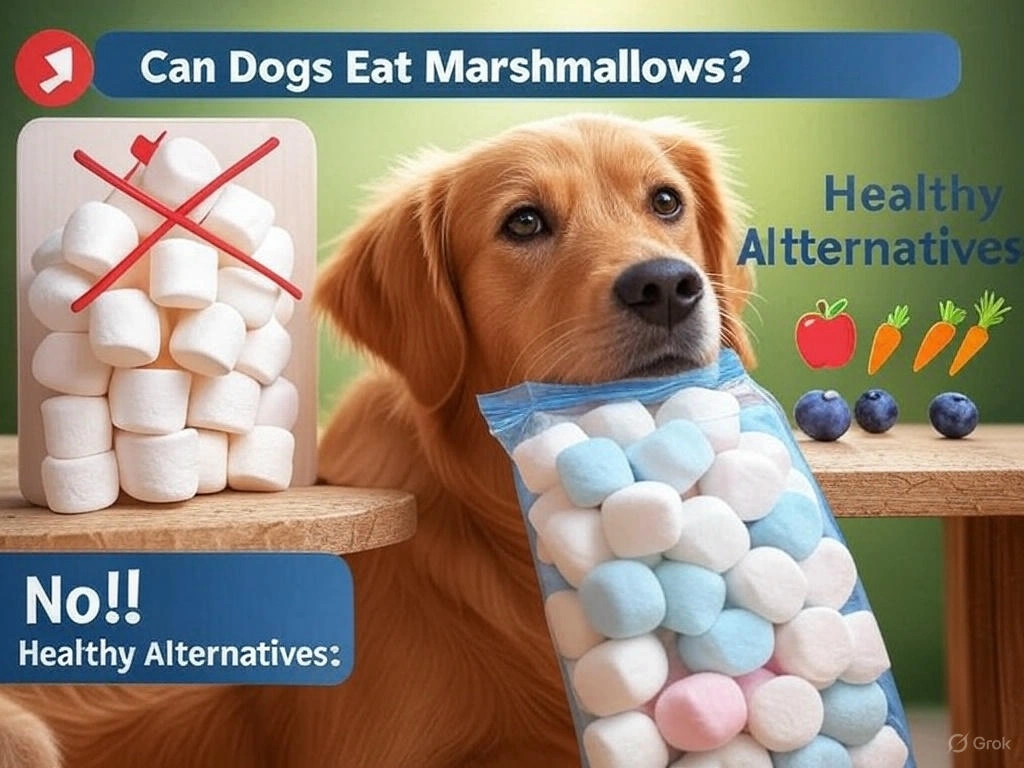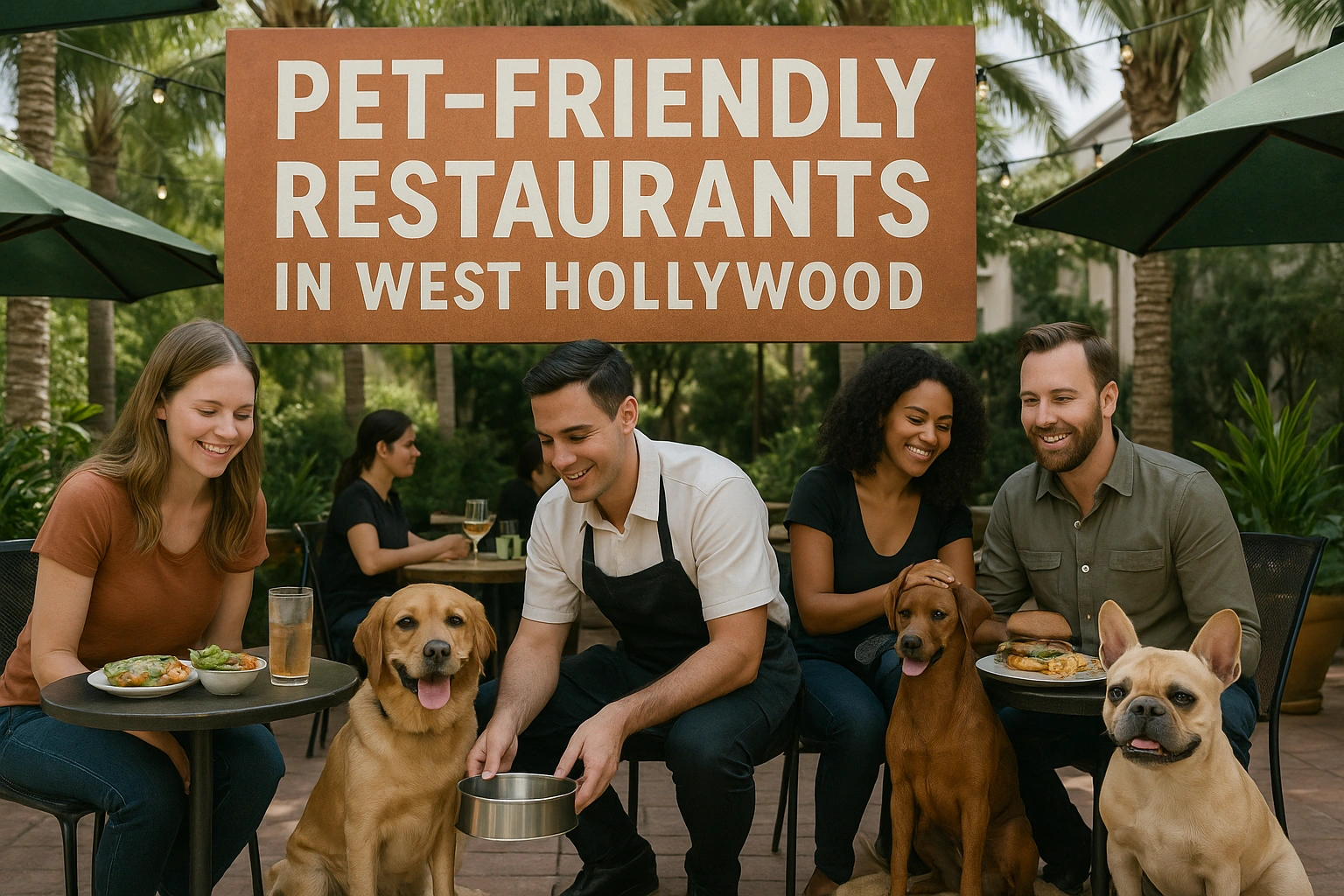
Can Dogs Eat Marshmallows? Risks, Safety Tips & Alternatives
I was reclining on the couch, snacking on a bag of marshmallows last night. Max glanced up at me in that specific look that I recognize. Big round eyes, head slightly tilted, just begging for a bite. For a second, I almost gave in. I mean, how much harm could a tiny marshmallow do, right?
But then I remembered something important.
Not everything we eat is safe for them. Some things that seem harmless can make our dogs sick.
Over the years, I’ve learned a lot about what dogs should and shouldn’t eat — sometimes the hard way. And I want to save you from learning it the tough way, too.
In this guide, I’m going to share everything you need to know about dogs and marshmallows. I’ll walk you through the risks, what to watch out for, and what you can give your dog instead. Because when it comes to our pups, they deserve only the best — and a little extra care can make all the difference. ❤️
Can Dogs Eat Marshmallows?
If you’ve ever dropped a marshmallow and seen your dog pounce on it, you’re not alone. I’ve been there too. The truth is, yes, dogs can physically eat marshmallows. But that doesn’t mean they should.
Marshmallows are packed with sugar, and dogs’ bodies just aren’t built to handle so much sweetness. Eating too much sugar can lead to weight gain, diabetes, and even serious tummy troubles. I’ve seen dogs get sick from just a few pieces. Trust me, it’s not worth the risk.
Even worse, some marshmallows, especially the sugar-free ones, contain an ingredient called xylitol.
Xylitol is extremely toxic to dogs — even a tiny amount can cause dangerous drops in blood sugar, seizures, or worse. If you want to dive deeper into why xylitol is so dangerous, I recommend checking out this guide on xylitol poisoning in dogs.
So, while one regular marshmallow might not cause an immediate emergency, it’s still not a good habit. There are so many better, safer treats out there that our pups will love just as much, without the risks.
When it comes to marshmallows, I always say: better safe than sorry.
Risks of Feeding Marshmallows to Dogs
I’ll be honest — I used to think one little marshmallow wouldn’t hurt. But over the years, I’ve learned the hard way that even small treats can have big consequences for our dogs.
High Sugar Content
First off, marshmallows are loaded with sugar. Dogs just aren’t built to handle that much sweetness. Too much sugar can lead to weight gain, dental problems, and even diabetes. I had a neighbor whose Labrador developed diabetes from years of sneaking sugary snacks. It broke their heart — and mine too, watching it happen.
Xylitol Toxicity
The real danger, though, is with sugar-free marshmallows. Many of them contain xylitol, an artificial sweetener that’s extremely poisonous to dogs. Even a small amount can cause a sudden drop in blood sugar, seizures, liver failure, or worse. If you want to understand just how serious xylitol poisoning can be, this article from the American Kennel Club explains it well.
Choking Hazard
Another thing many people don’t realize — marshmallows are sticky. They can easily get stuck in a dog’s throat, causing a choking emergency, especially with small breeds.
Digestive Upset
Even if your dog doesn’t choke, marshmallows can cause stomach troubles. I’ve seen dogs get sick with vomiting, diarrhea, and painful bloating after eating just a few.
At the end of the day, it’s just not worth the risk. Our dogs trust us to make the best choices for them — and keeping marshmallows off their treat list is one small way to protect them.
Signs of Marshmallow Toxicity in Dogs

If your dog manages to sneak a marshmallow (or a few), it’s important to know what signs to watch for. I always say it’s better to react early than to regret it later.
Vomiting is usually the first warning sign. If your dog throws up after eating marshmallows, don’t brush it off. Their body is trying to get rid of something it knows isn’t right.
Lethargy is another big red flag. If your normally bouncy pup suddenly acts tired and weak, it’s time to pay attention. Max once got into candy at a family party, and the way he just laid there scared me to death.
If you notice tremors — little muscle shakes or jerking movements — that’s serious. It could mean their blood sugar is crashing dangerously low.
Seizures can happen if the situation gets worse. And in very bad cases, dogs can even collapse without warning.
If you see any of these signs, don’t wait. Call your vet immediately or reach out to a 24-hour emergency clinic. Quick action can save your dog’s life.
You can also find more on emergency signs to watch for in this trusted guide by VCA Animal Hospitals.
When it comes to our dogs, every second matters. Always trust your gut — if something feels wrong, it probably is.
Safety Tips If Your Dog Accidentally Eats a Marshmallow
Look, accidents happen — even in the most careful homes. I remember once turning my back for just a second, and my dog snatched a marshmallow right off the coffee table. If that ever happens to you, don’t panic — but do act quickly.
If it’s a regular marshmallow (the sugary kind, not sugar-free), your dog will probably be okay after eating just one. I kept a close eye on my pup for several hours, watching for any vomiting, diarrhea, or unusual tiredness. Make sure your dog has plenty of water and stick to their normal food — no extra treats, no excitement.
If it’s a sugar-free marshmallow, though, it’s a whole different story. Many sugar-free sweets contain xylitol, which is extremely toxic to dogs. Even a small bite can be life-threatening. In this case, don’t wait — call your vet immediately or head to an emergency clinic. Time matters.
It’s also smart to keep the ASPCA Animal Poison Control Center number handy: 888-426-4435. They’re lifesavers when you need quick advice.
One thing I’ve learned over the years: Trust your gut. If something feels off with your dog, don’t second-guess it. Better safe than sorry when it comes to our best friends.
Healthy Alternatives to Marshmallows for Dogs
As a pet owner, I know how easy it is to want to spoil your dog with tasty treats. But, as much as I love sharing a treat with my dog, I’ve learned the hard way that not everything meant for us is safe for our furry friends. Instead of marshmallows, which are full of sugar and sometimes harmful ingredients, let’s dive into some safe, nutritious, and tasty alternatives that will make both you and your dog happy.
Fresh Fruits & Vegetables
Fruits and vegetables are naturally healthy and make great, low-calorie treats for dogs. They can help keep your dog’s coat shiny and provide beneficial nutrients. Here are a few of my go-to snacks:
- Apple slices (seedless): Apples are crunchy, refreshing, and full of vitamins A and C. Just remember to remove the seeds and the core before offering them to your dog, as the seeds can be toxic.
- Carrot sticks: These are low in calories and high in fiber, making them a great snack that also helps with your dog’s dental health. When my dog chews on carrots, I feel good knowing they’re not only satisfying his craving but also promoting good teeth!
- Blueberries: These tiny powerhouses are rich in antioxidants, making them a healthy snack option for your dog. They’re especially great as a training reward because they’re small and easy to chew.
- Green peas: Whether fresh or frozen, peas are packed with vitamins and minerals. I often throw them into my dog’s food bowl as a tasty side, and he loves them. They’re a fantastic low-calorie snack too.
For a full list of safe fruits and veggies, check out the American Kennel Club’s guide on what fruits and veggies your dog can and can’t eat.
Homemade Dog Treats
Making your own treats can be a great way to control what your dog is eating, and I’ve found that my dog loves them even more because I put in the time and love. Here’s one of my favorite simple recipes that I use to spoil my dog with healthy, homemade snacks:
Peanut Butter & Banana Biscuits
- Ingredients:
- 1 ripe banana
- ½ cup xylitol-free peanut butter (important — xylitol is toxic to dogs!)
- 1 egg
- 1½ cups whole wheat flour
- Instructions:
- Preheat your oven to 350°F (175°C).
- Mash the banana until smooth, then mix it with the peanut butter and egg.
- Gradually add in the flour until you have a dough-like consistency.
- Roll out the dough and cut it into fun shapes (I use dog bone-shaped cookie cutters).
- Bake on a sheet for 15 minutes or until golden brown.
These treats are not only delicious but also packed with healthy fats and potassium from the banana and peanut butter. Plus, I always feel confident knowing exactly what my dog is eating.
You can find more recipes like this on It Doesn’t Taste Like Chicken. It’s one of my go-to sites for simple and healthy dog treat ideas.
Moderation is Key
Even though fruits, vegetables, and homemade treats are healthy options, I always remind myself (and fellow pet owners) that moderation is important. Giving too many treats, even healthy ones, can lead to weight gain, upset stomachs, or other health issues. If you’re introducing a new snack, it’s always a good idea to start slow and watch for any unusual reactions. Your dog’s health and happiness are top priority!
By switching to these healthy alternatives, you’re not just keeping your dog’s sweet tooth satisfied; you’re also helping them stay fit and healthy. And let’s face it — when we give our dogs treats, it’s really about that connection we share with them. There’s nothing better than knowing your dog is enjoying a tasty treat that’s good for them, too!
Why It’s Best to Stick to Dog-Safe Treats
As a dog parent, I’ve learned that our furry friends aren’t quite built to handle the same foods we love. Dogs have very different digestive systems compared to humans, and it’s something we need to consider when offering them treats.
Human sweets, like marshmallows, might be sweet and fun for us, but they can cause real problems for our dogs. Some ingredients in human treats can upset their stomachs or even lead to long-term health issues. For example, sugar can lead to weight gain and dental problems, while artificial sweeteners like xylitol are downright dangerous.
When we stick to dog-safe treats, we’re not just keeping them happy in the moment. We’re helping protect their health in the long run. It’s a small choice, but it can make all the difference in keeping them healthy and full of energy. After all, our dogs rely on us for their well-being, and making sure they get the right food and treats is part of the love we give them.
By choosing treats made specifically for dogs, you know exactly what’s in them, and it’s easier to give them the best without any worry. It’s all about their happiness and health.
FAQ’s
Answer: One regular marshmallow usually won’t harm a dog, but it’s still not recommended due to the sugar content.
Answer: No. Sugar-free marshmallows often contain xylitol, which is extremely toxic to dogs.
Answer: If it’s a regular marshmallow, monitor for symptoms. If it’s sugar-free, contact a vet immediately.
Answer: Offer fruits like apple slices (no seeds), blueberries, or healthy dog treats approved by vets.
Answer: Xylitol can cause insulin release, leading to low blood sugar, seizures, liver failure, or even death.
Answer: It can cause stomach upset, vomiting, or diarrhea due to sugar and artificial ingredients.
Answer: It could lead to severe stomach issues or more serious health risks, requiring vet consultation.
Answer: No, they’re high in sugar and artificial ingredients, which are unhealthy for dogs.
Answer: While rare, large amounts could cause serious health problems; contact a vet if worried.
Answer: Yes. Details on…
Conclusion
After all this, it’s clear that marshmallows aren’t your dog’s best treat. Sure, they might love the sweet taste, but the risks—upset stomachs, weight gain, and long-term health issues—just aren’t worth it. As dog owners, we want to keep our pets happy and healthy, and offering them safe, nutritious treats is the best way to do that.
Instead of marshmallows, try dog-friendly options like carrots, apples (without seeds), or even special dog treats packed with nutrients. These alternatives keep your pup’s tail wagging without the worry.
Remember, your pup deserves treats that not only make them happy today but help them live a long, healthy life. Choose wisely, and their tail will thank you!



